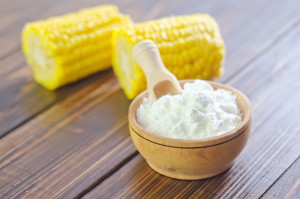Contents
Uses
- Corn starch is often preferred to flour as a thickener because the resulting gel is transparent, rather than opaque. Corn starch is also relatively flavorless compared to flour and provides roughly two times the thickening power. Corn starch can be substituted at half the volume of flour in any recipe that calls for flour as a thickening agent.
- Corn starch can also be used to coat fruit in pies, tarts, and other deserts before baking. The thin layer of corn starch mixes with the fruit juices and then thickens as it bakes. This prevents pies and other desserts from having a watery or runny texture.
- Corn starch is also used as an anti-caking agent. Shredded cheese is often coated with a thin dusting of corn starch to prevent it from clumping in the package. The corn starch will also help absorb moisture from condensation and prevent a slimy texture from developing. A small amount of corn starch is often mixed into powdered sugar for the same purpose.
Benefits
-
Calorie Booster
Although most people are trying to cut calories, some need to add calories to help with weight gain. A 1-tablespoon serving of corn starch has 30 calories. As a nearly flavorless powder that mixes well with a number of different foods, corn starch can help boost your calorie intake without having much of an effect on your appetite. It does thicken the consistency of the foods you add it to, however, so you may be better off mixing it in foods that you want to thicken or foods that are already thick. Good options include yogurt, hot cereal, pudding, mashed potatoes and gravy.
-
Source of Energy
All the calories in the cornstarch come from its carbohydrate content. A 1-tablespoon serving contains 8 grams of carbs. Carbs are the macronutrient you need in the largest amount. That’s because carbs are your body’s preferred source of energy. While carbs from foods such as cornstarch help give you the energy to get up and go, those carbs are also used to fuel your basic body functions, including your heartbeat, breathing and brain activity.
-
Treatment for Hypoglycemia
Cornstarch also has medicinal benefits and has been used to help manage low blood sugar in people with diabetes and glycogen storage disease, which is an inherited metabolic disorder. Uncooked cornstarch digests slowly and supplies a slow, steady stream of glucose, which may help to prevent low blood sugar, especially at night during sleep. While cornstarch offers this medical benefit, you should not add cornstarch to your diet for helping with blood sugar control unless directed to do so by your doctor or dietitian.
Cautions
- While cornstarch is commonly used in cooking, you should avoid eating or drinking large quantities of cornstarch. Do not get cornstarch dust in your eyes. Avoid inhaling cornstarch dust when using. If one of these exposures happens, provide treatment as indicated. If irritation continues, contact your physician.
Interactions
Please consult your pharmacist.
Other Names
cornflour, maizena
References
Source: Live Strong, http://www.livestrong.com/article/479831-what-are-the-health-benefits-of-cornstarch/
About Food, http://foodreference.about.com/od/Food-Additives/a/What-Is-Corn-Starch.htm

